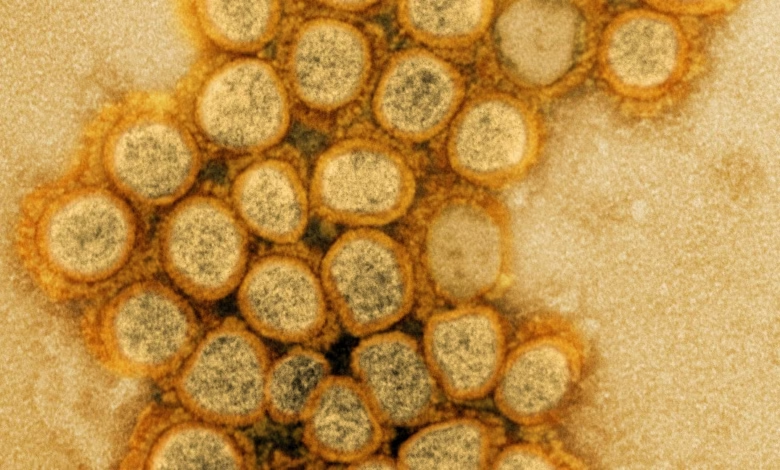
▼ Summary
– COVID-19 transmission is currently low in the US, but experts worry about a potential summer wave due to waning immunity and the rise of a new variant.
– The new variant, NB.1.8.1, is a descendant of omicron and may bind more easily to human cells and evade some immune responses.
– The WHO has designated NB.1.8.1 as a “variant under monitoring” due to its potential advantage, though it doesn’t cause more severe disease and vaccines remain effective.
– NB.1.8.1 is rapidly spreading in the US, now accounting for 37% of cases, up from 15% two weeks ago, and may soon overtake LP.8.1.
– CDC estimates on variant proportions have wide ranges due to limited data, with NB.1.8.1 potentially making up 13% to 68% of cases.
Health officials are monitoring a rapidly spreading COVID-19 variant that could trigger a summer surge across the United States. While current transmission levels remain relatively low, concerns are growing as immunity wanes and a new strain gains traction.
The variant, designated NB.1.8.1, is part of the omicron family, specifically descending from the recombinant XDV.1.5.1. Early data suggests it may bind more efficiently to human cells and partially evade immune defenses, giving it a potential transmission edge over currently dominant strains like JN.1 and LP.8.1.
The World Health Organization recently classified NB.1.8.1 as a “variant under monitoring” after observing its rapid spread in parts of Asia, including China, Hong Kong, Singapore, and Taiwan. Though it hasn’t been linked to more severe illness, rising hospitalizations in those regions have raised alarms. Existing vaccines are expected to maintain some level of protection, but breakthrough infections could still drive case numbers upward.
In the U.S., NB.1.8.1 has surged from 15% to 37% of sequenced cases in just two weeks, according to CDC estimates. It’s now nearly tied with LP.8.1, which currently accounts for 38% of infections. However, health officials caution that these figures come with significant uncertainty, NB.1.8.1’s actual prevalence could range anywhere from 13% to 68%, reflecting gaps in real-time surveillance.
With summer travel and gatherings likely to accelerate spread, experts warn that the combination of fading immunity and this highly transmissible variant could lead to another wave. While severe outcomes remain less common than in earlier pandemic phases, vulnerable populations, including the elderly and immunocompromised, may face heightened risks if cases climb sharply.
(Source: Ars Technica)